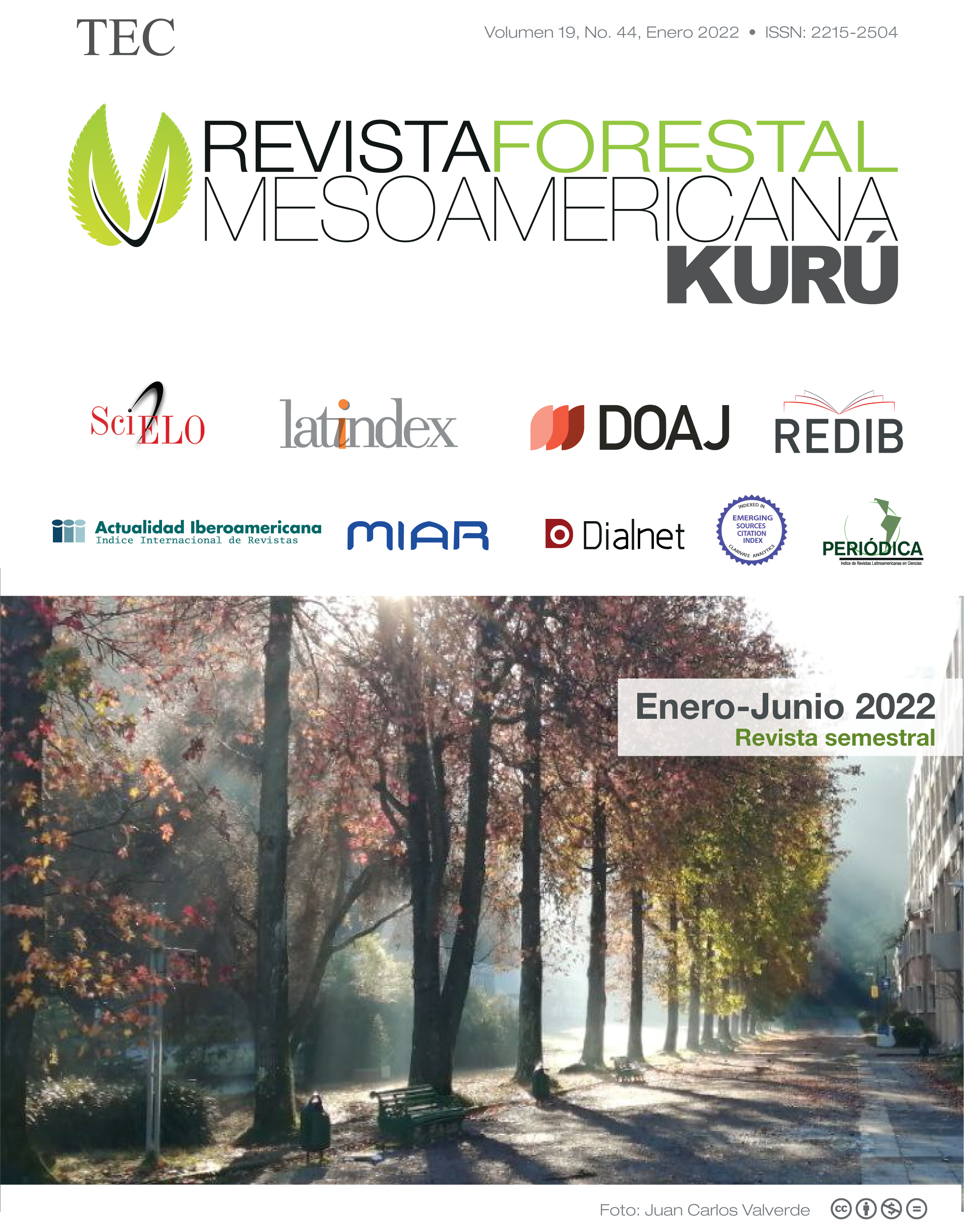Biomass prediction in clonal plantations of Tectona grandis L. f y Gmelina arborea Roxb. in Costa Rica
Main Article Content
Abstract
Actually, climate change is listed as the main problem facing humanity, parallel to this, forest ecosystems are recognized as carbon sinks. The objective of this work was to develop predictive models of biomass per unit area (hectare) for Tectona grandis and Gmelina arborea, established in commercial plantations from clonal material. The biomass of each component of the tree (leaves, branches, root, stem) was calculated using allometric models developed for both species. The information to apply those models was obtained from databases on tree measurements in permanent sampling plots and for each permanent plot, the biomass, and the basal area were calculated and then extrapolated to a hectare. Later, aggregate models were developed for the biomass per hectare of leaves, branches, roots, stems, for woody biomass and total biomass. All the models showed an adjustment (R2) greater than 85 %, with RCME and EMA values less than 0.23 and errors or estimation biases less than 2.5 %. The chosen models are characterized by their robustness, precision, and practicality of use, making them a very useful tool for predicting biomass.
Article Details

This work is licensed under a Creative Commons Attribution-NonCommercial-NoDerivatives 4.0 International License.
Revista Forestal Mesoamericana Kurú is licensed under CC BY-NC-ND 4.0
Al enviar un artículo a la Revista Forestal Mesoamericana kurú (RFMK), los autores ceden los derechos patrimoniales a la editorial de la RFMK una vez su manuscrito haya sido aprobado para publicación, autorizando a la RFMK a editarlo, reproducirlo, distribuirlo, y publicarlo en formato físico y/o electrónico. La titularidad de los derechos morales sobre los trabajos objeto de esta cesión seguirá perteneciendo a los autores.

